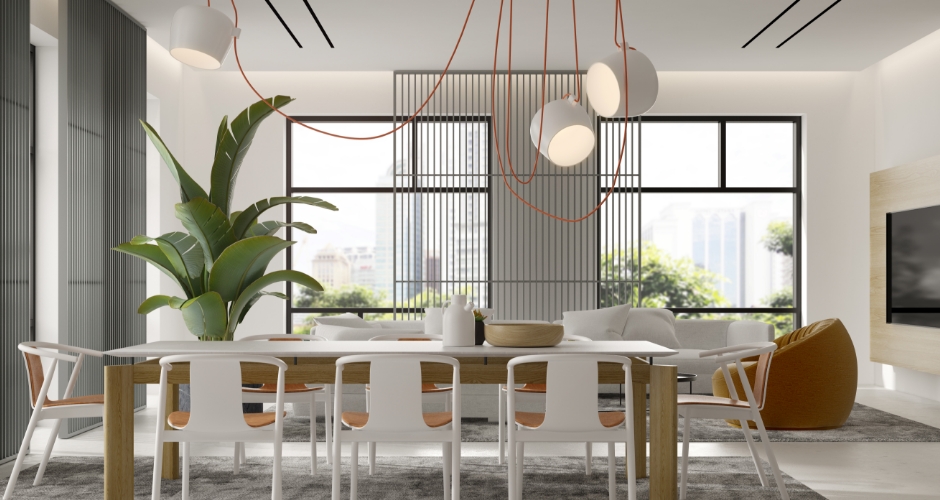Moving into a new home can be exciting and stressful at the same me. Exciting because of new beginnings, and stressful because of the planning, packing, unpacking, problem solving (read: arguing) and financing etc. involved. It’s no cheap affair. With house renovation costs these days setting homeowners back by at least $50,000 for a 4-room BTO (built to order) flat and closer to $60,000 for a 4-room HDB resale flat (source: Qanvas), it makes sense to be prudent with your renovation.
Here is a roundup of some of the best tips on trimming your renovation expenses.
1. Cut out the middleman
Liaising with contractors and suppliers directly instead of hiring an interior designer or project manager to do it all for you is a major way to save money. With a slew of Singaporean Instagram accounts dedicated to documenting their renovation journey and home designs, there’s plenty of online community resources for you to pick up tips, tricks and inspiration for your house renovation.
There are also apps that connect you with contractors from different specialties. Before engaging them, do check their credibility by checking HDB’s registry of contractors and ACRA’s business registry, since renovation scams and botched jobs are not unheard of. A huge word of caution however is that going down this route requires a lot of me and effort doing intensive research and coordinating between multiple pares. You’ll have to weigh whether the savings are worth the high commitment and intensive mental load.

2. Do with less built-in furniture
Carpentry is an area in your renovation budget which you have the most room to play with. While you can customise built-in furniture to suit your needs and lifestyle, it will cost a prey penny. For instance, the price difference in carpentry costs between an extensively renovated bedroom and a lightly renovated one can be almost $30,000, according to Home & Decor Magazine. That’s just one room – imagine the cost savings you can enjoy if you opt for minimal carpentry for an entire house!
What you could do instead is to buy loose furniture for storage solutions. With some creative styling and home decor, it is still possible to create a beautiful home that serves you and feels like you without breaking the bank.
3. Be cost-conscious around your le and material choices
Choosing more affordable floor le options is another component where you can save money. Some materials cost a fortune and can be replaced by cheaper options. For instance, hardwood flooring costs between $30 to $50 per square foot, while vinyl and laminate cost around $4 to $6 per square foot (source: Home & Decor Magazine). Going for the latter reduces your renovation costs
significantly.
Similarly, wallpapers can give your home a visual appeal, but opting for painted walls is more economical.
4. Source for your own fittings and accessories
As part of their services, some interior designers will charge you a fee for helping you to source and purchase accessories such as lights and toilet accessories. To trim your renovation expenses, you can shop for these on your own from online suppliers. Those based overseas may be able to offer more attractive prices than local shops. If you are willing to pore through online sales listings on your own and wait a longer delivery me, this is another area where you can bring down your renovation budget.

5. Join group buys and shop clearance sales for big-ticket appliances
As you renovate your house, you may be shopping for home appliances around the same me to prepare your house for moving in. Apart from their clearance sales, some major electronics retailers will offer discounts for appliances to house owners in new BTO estates. Look out for these opportunities and other group buys to snag bargains on large appliances such as aircon units, TVs, fridges, washing machines, etc.
6. Be disciplined and stick to your budget as closely as possible
Lastly, the simplest tip but possibly the hardest one is to stick as closely as you can to your renovation budget. Granted, additional costs in renovation projects are to be expected because there always will be blind spots and details that you may not have factored in earlier. That’s why it’s good to set aside a contingency fund of at least 10% for the unavoidable top-ups.
The danger is when you browse through inspiration pictures during your renovation process and feel tempted to upgrade your renovation plans with fancy finishes or premium materials that are beyond your budget. As you begin to dream up your ideal renovation, it’s good to decide which parts of your house you’re willing to splurge on and where you don’t mind doing just the bare minimum. Stay firm on these values or your renovation costs will exceed your budget in no me.
Take This Simple Step To Protect Your Renovation
After investing money, me and effort into renovating your dream home, consider purchasing home insurance to protect your home contents and renovation. Find out about Etiqa’s latest home insurance offers.




 Group
Group